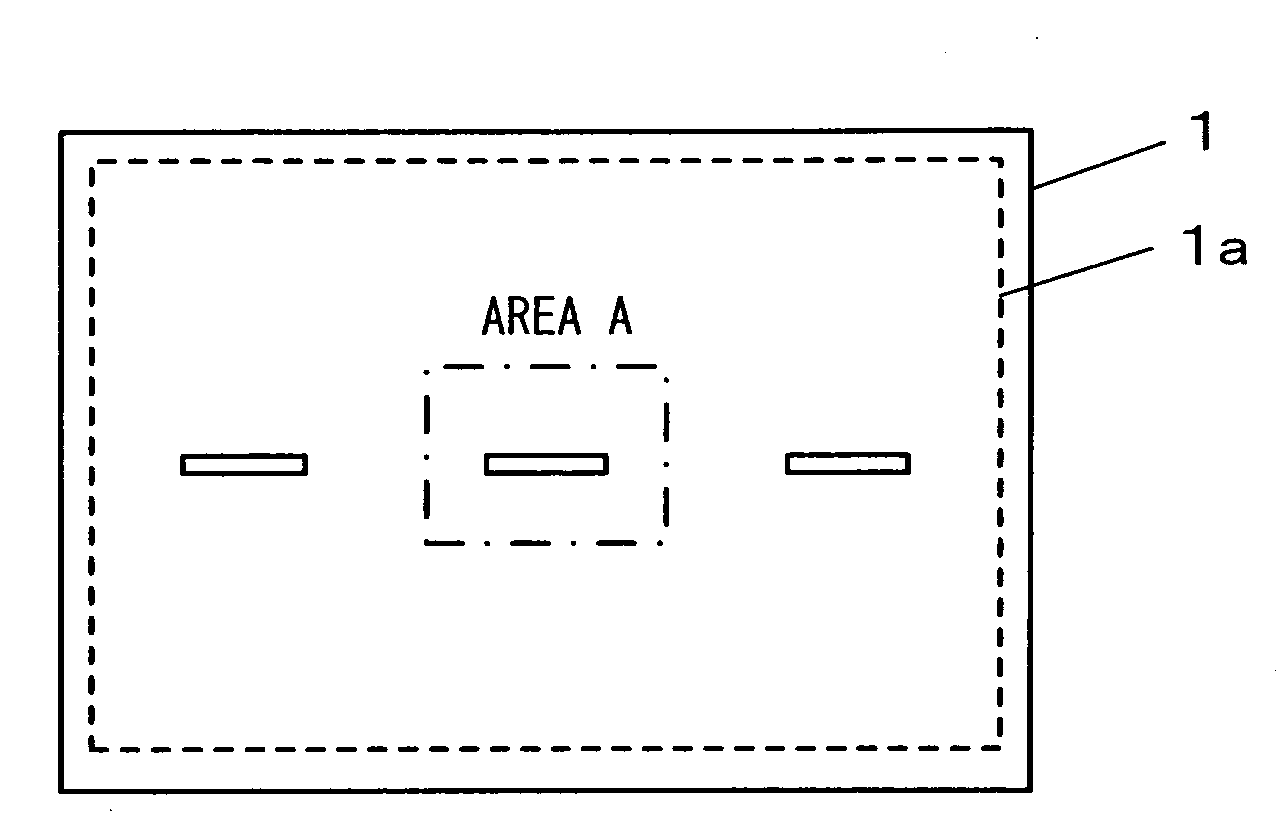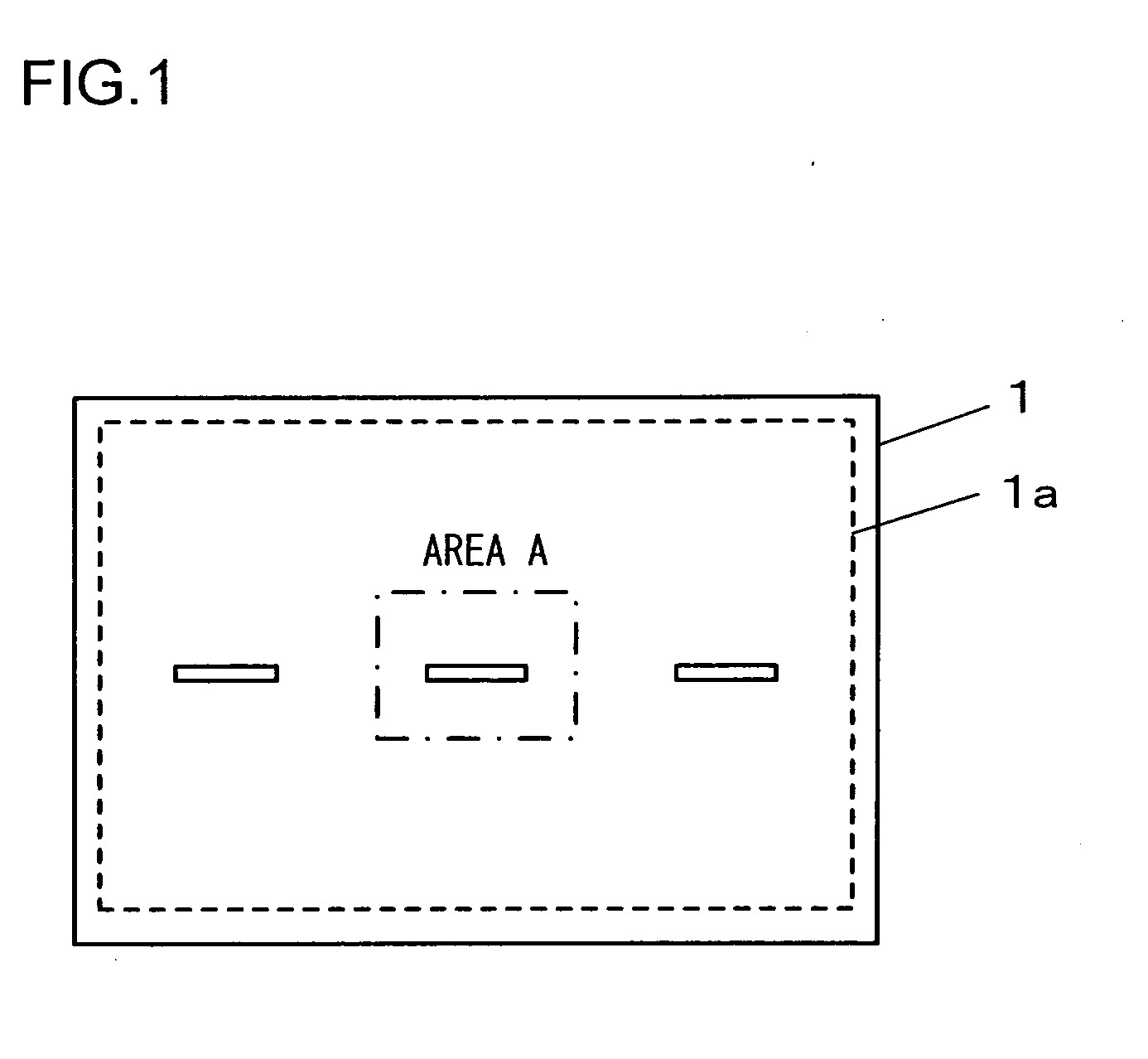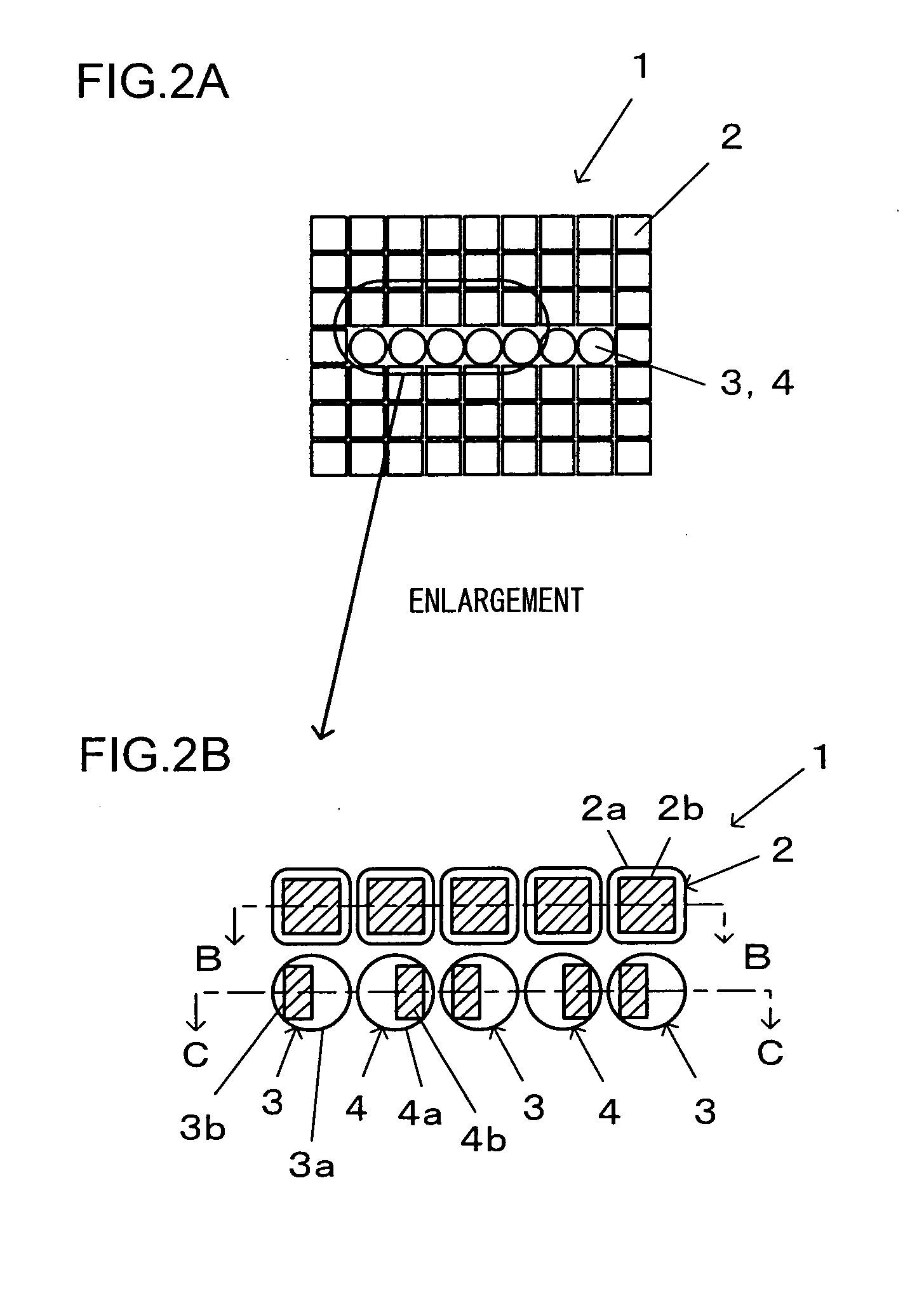Image sensor and image-capturing device
a technology which is applied in the field of image sensor and image capture device, can solve the problems of poor focus detection accuracy and achieve the effect of poor focus detection accuracy and less precision
- Summary
- Abstract
- Description
- Claims
- Application Information
AI Technical Summary
Benefits of technology
Problems solved by technology
Method used
Image
Examples
Embodiment Construction
[0029]FIG. 1 is a front view of the image sensor achieved in an embodiment. The image sensor 1 in the embodiment includes imaging pixels disposed in a two-dimensional array within its effective pixel area 1a, with focus detection pixels disposed over part of the array, i.e., over a central area and areas to the left and to the right of the central area within the effective pixel area 1a. FIG. 2A shows the central area A in the image sensor 1 shown in FIG. 1 in an enlargement, whereas FIG. 2B shows part of FIG. 2A in a further enlargement. In addition, FIG. 3A shows the image sensor 1 in FIG. 2B in a section taken through B-B, whereas FIG. 3B shows the image sensor 1 in FIG. 2B in a section taken through C-C. It is to be noted that FIG. 2B shows photoelectric conversion elements disposed under micro-lenses as well.
[0030]As shown in FIGS. 3A and 3B, the image sensor 1 is formed by attaching a photoelectric conversion element array 6, with a plurality of photoelectric conversion elemen...
PUM
 Login to View More
Login to View More Abstract
Description
Claims
Application Information
 Login to View More
Login to View More - R&D
- Intellectual Property
- Life Sciences
- Materials
- Tech Scout
- Unparalleled Data Quality
- Higher Quality Content
- 60% Fewer Hallucinations
Browse by: Latest US Patents, China's latest patents, Technical Efficacy Thesaurus, Application Domain, Technology Topic, Popular Technical Reports.
© 2025 PatSnap. All rights reserved.Legal|Privacy policy|Modern Slavery Act Transparency Statement|Sitemap|About US| Contact US: help@patsnap.com



